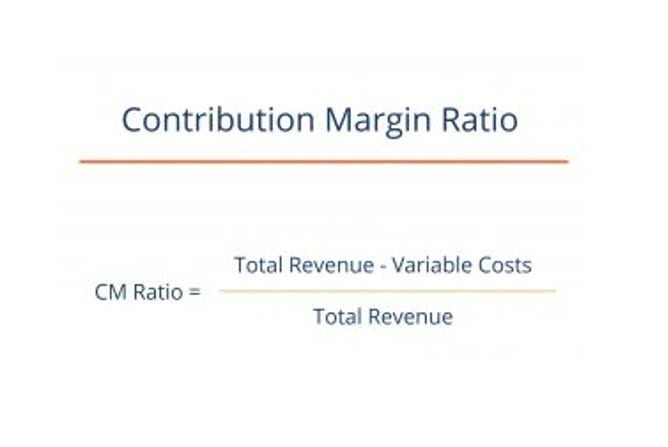Bookkeeping
How to Calculate Sales Margin

This can be useful when you know the industry standard margin and want to set your prices accordingly. Whether you’ve been in business for years or you’re setting your first pricing strategy, you need to know how to calculate profit margin. Operating profit margin can often be a preferred metric over net profit margin when analysing the performance of a company. This isbecause each company has a very different capital structure which leads to different levels of tax and interest paid.
- Regularly reviewing pricing strategies and monitoring expenses can also lead to significant improvements.
- This content may include information about products, features, and/or services that SoFi does not provide and is intended to be educational in nature.
- In a real margin trade, you would need to also back out any interest expense incurred on the margin loan before calculating your return; this would act as an additional drag on earnings.
- It demonstrates the percentage of revenue over andabove the costs involved in making the products (COGS – cost of goods sold).
- For example, if your margin is 35 percent, subtracting 0.35 from 1 gives you 0.65.
- Discover the formula to calculate profit margin yourself, also understand the importance of margin and how it’s used in business.
Margin formula
- If the calculated cost of sales was $40,000, then the sales margin is $20,000 which is 33.3% per month when divided by the gross sales.
- This figure can be expressed as either a percentage or an absolute value.
- Typically, the first step to getting started with margin trading is to open a margin account with a brokerage firm.
- For instance, expense automation helps you track small, uncontrolled purchases that often go unnoticed.
- Trading on margin is similar to “buying on credit.” Using margin for a trade is also known as leveraging.
- Thus, in our example, dividing 54 percent markup by 1.54 gives you 35 percent margin.
- The profit margin formula will then calculate a selling price for you.
For example, if a product has a sales margin of 10%, this means that for every $1 the product is sold for, the company makes 10 cents of profit. Remember, while sales margin is crucial, it should be QuickBooks considered alongside other metrics like sales volume, market share, and customer satisfaction. The most successful businesses take a holistic view of their performance, using sales margin as one of several key indicators guiding their strategy. Sales margin is more than just a financial metric—it’s a powerful tool that can drive strategic decision-making and business growth. By mastering the calculation and interpretation of sales margin, you equip yourself with invaluable insights into your business’s profitability and operational efficiency. A primary benefit of margin trading is the potential expansion of an investor’s purchasing power, sometimes exponentially.
- To determine whether your margin is good or sustainable, review industry-specific data.
- Accounting books, annual accounts, compulsory chartered accountants…
- Common mistakes businesses make when calculating sales margins include failing to account for all costs, not updating cost data regularly, and misclassifying expenses.
- Markup is the difference between your cost of goods sold and your selling price.
- Margins are an important measure of success for any business and can be the difference between a thriving company and one that’s barely scraping by.
- In the fashion industry, seasonal trends and high return rates are critical factors.
What is the difference between margin and markup?
Your sales margin is one of the most important financial metrics for businesses. It tells you how much profit you’re making on each sale and can be a key indicator of your company’s health. Second, margin takes into account the total cost of the product, including shipping and other costs, while markup only considers the COGS. Markup is the difference between your cost of goods sold and your selling price. For how to calculate sales margin example, if you sell a product for $100 and it costs you $60 to make, your markup is $40.

How MAGNA-TILES® implemented a corporate card program, reduced stress, and prepared to build with Ramp
Many businesses experience seasonal fluctuations in both sales and costs, which can impact margins. Margin trading can be profitable, but there are no guarantees for investors that it will be. It can also lead to outsized and substantial losses for investors, so it’s important to consider the risks and potential benefits. Typically, the first step to getting started with margin trading is to open a margin account with a brokerage firm.

Online Investments
If that same investor uses $10,000 of their own money and a margin — essentially a loan — of $10,000 and the stock loses value, they may actually end up owing more money than their initial $10,000. While margin trading may seem straightforward, it’s important to understand all the parameters. The business world is full of terms, and gross margin is definitely among the most important.
Thus, in our example, dividing 54 percent markup by 1.54 gives you 35 percent margin. Sales margin can be calculated by subtracting the cost from the sales price of a product and then dividing that amount (net profit) by the sales price. For example, let’s say your company had $100,000 in sales last year, and your COGS was $60,000.

This could possibly help boost returns if the price of the stock or other investment purchased with a margin trade goes up. When you buy on margin, you’re purchasing assets using money that you borrow from your broker. Margin trading might seem more complicated than some other ways to invest in the stock market, but it’s a method that many investors favor — especially experienced investors.
Algorithmic Trading Explained: What Is Algo Trading?
And don’t forgetto check back and use our margin calculator whenever you need it, to help you with your calculations. In business, gross profit margin and net profit margin are two critical measures of profitability. There are a number of strategies you can use to increase your profit margin.

By focusing on these strategies, you can keep customers longer and reduce churn. AI-driven personalization boosts sales by tailoring experiences to your customers. Recommending products based Bookstime on previous purchases encourages repeat business and higher spending. Use this insight to evaluate your spending and identify areas for improvement. You can also customize the sheets to suit your needs – organizing your data by business units, applying conditional formatting to highlight low margins, or including graphs to visualize trends. These tools help you spot patterns quickly and take steps to improve profitability.
